M-SYSTEMS DiskOnChip Millennium
Datasheet
Extracted Text
Data Sheet DiskOnChip Millennium MD2800, MD2810 8MB Single Chip Flash Disk JUL 2000 93-SR-002-00-8L Rev. 2.1 DiskOnChip Millennium Data Sheet Features � Single chip, easy-to-integrate, plug-n- play flash disk �� Low power, single 3.3V or 5V power �� supply �� 8MB (64Mbit) capacity �� ���� Small form factor −−−− available in 32-pin TSOP-II or DIP ���� EDC/ECC for high data reliability ���� Full boot capability with auto-loading Applications boot page cache � Embedded systems ���� Broad O/S support: DOS, Windows 95 and 98, Windows NT 4.0, Windows ���� Internet access devices CE, Embedded NT, pSOS+, QNX, ���� Internet set-top box or ITV, web VxWorks, Linux, and others browser �� O/S-less environment support �� ���� WBT, thin client, network computer �� Windows CE and Tornado native �� ���� Routers, networking support ���� Web-phones, car-PC, DVD, HPC ���� Small (8KB) memory window size ���� Point of sale � Embedded TrueFFS technology ���� Industrial PC’s provides: �� Telecom �� —Full hard-disk read/write and boot capability emulation �� Medical �� —Third-generation wear leveling —Automatic block management —Power loss recovery ���� Compatible with major processors: x86, MediaGX, PowerPC, 68K, MIPS, SHx, StrongARM, and others Rev 2.1 March 2000 93-SR-002-00-8L Rev. 2.1 2 DiskOnChip Millennium Data Sheet 1. General Description The DiskOnChip Millennium is the third generation of M-Systems’ DiskOnChip series of products. The Millennium series is the world’s first monolithic solid-state flash disk. It combines a disk controller with flash memory on a single die. DiskOnChip Millennium is available in a standard 32-pin DIP or 32-pin TSOP-II packages. DiskOnChip Millennium products are optimized for use where minimal weight, space, and power consumption are required. These products include: information appliances, set-top boxes, thin clients or network computers, thin servers, and embedded, portable PC-compatible computers. It is therefore a very attractive alternative to conventional hard and floppy disk drives. The DiskOnChip family has been designed into more than 400 standard embedded motherboards, where it provides low cost, low power, high capacity, and high reliability flash disk solutions. DiskOnChip Millennium can be plugged into a standard DIP socket or soldered directly onto the motherboard, eliminating the need for mechanical disk drives, bulky ribbon cables, and connectors. The monolithic design of the DiskOnChip Millennium ensures high reliability even when subjected to levels of shock, vibration, and temperature changes that would destroy a conventional magnetic disk drive system. Designed for ease of use and minimal integration overhead, the DiskOnChip Millennium can be pre- programmed for fast production or programmed on board during production. In addition, future software upgrades and formatting can be done on the target platform. There is no need to remove DiskOnChip Millennium from its socket to modify or reformat its contents. 93-SR-002-00-8L Rev. 2.1 3 DiskOnChip Millennium Data Sheet 2. Detailed Feature List TrueFFS Technology TrueFFS is M-Systems’ patented flash file system management technology. It allows flash components to fully emulate hard disks, so that they can be written to and read from like any other hard disk, rather than as a memory device. This speeds up design and integration time. In addition, TrueFFS software simplifies and enhances the use of flash memory disks by: Using third generation wear leveling, which ensures that all blocks are erased an equal number of times; this increases the life of the flash media by orders of magnitude. Using virtual blocking of flash device to make erasure of large blocks transparent to the operator. Automatic block management – blocks that fail are automatically replaced from a pool of spares. Implementing a robust power-loss recovery mechanism to guarantee absolute protection of data. Providing conventional address support for 8-bit, 16-bit, and 32-bit architecture configurations. Support for the 16-bit and 32-bit bus architectures, commonly used in RISC processors, can be achieved by using the LSB of the data bus as follows: � For 16-bit address boundary shifts, shift the address lines by one, so that the host address line A1 connects to DiskOnChip address line A0, the host address line A2 connects to DiskOnChip line A1, and so on. � For 32-bit address boundary shifts, shift the address lines by two, so that the host address line A2 connects to DiskOnChip address line A0, the host address line A3 connects to DiskOnChip line A1, and so on. See application note AP-DOC-30 for further information. Small Form Factor and Low Power Integration of a flash disk on a single monolithic die gives the DiskOnChip Millennium unique features, including: Small footprint (32-pin TSOP-II or DIP packages). Low power consumption – Internal functions are synchronized with the CPU’s read and write strobes. This innovation eliminates the need for an external clock. The design is completely static. Single 3.3V or 5V power supply. These features make the DiskOnChip Millennium the best cost/performance solution for computers that require minimal weight, space, and power consumption, providing a very attractive alternative to conventional hard and floppy disk drives. 93-SR-002-00-8L Rev. 2.1 4 DiskOnChip Millennium Data Sheet Temperature Ranges The DiskOnChip Millennium is available in both commercial (0ºC to +70ºC) and extended (-40ºC to +85ºC) temperature ranges. Capacity Ranges and Cascading The TSOP version can be easily expanded from 8MB to 16MB, 24MB, or 32MB capacities by cascading up to four chips, without any additional glue logic. The DIP version can be replaced in-socket by larger capacity products from the pin-compatible DiskOnChip 2000 family. Easy Integration The following DiskOnChip Millennium features ensure fast and easy integration: Compatible with standard EEPROM pin-out. Supports local bus and ISA bus interface. Includes a 512-byte, auto-loading, programmable boot page cache for IPL data. Small memory-mapped window size – requires only 8KB (can be used with larger window sizes). Static operation – no clock required. 16 mA output drive (5 mA at 3.3V). Robust Error Correction The DiskOnChip family utilizes a Reed-Solomon Error Detection Code (EDC) and Error Correction Code (ECC), providing the following error immunity for each 512-byte block of data: Correction of up to two 10-bit symbols, including two random bit errors. Correction of single bursts up to 11 bits. Detection of single bursts up to 31 bits and double bursts up to 11 bits. Detection of up to 4 random bit errors. High Reliability The DiskOnChip Millennium can be plugged into a standard DIP socket or soldered directly onto the motherboard, eliminating the need for mechanical disk drives, bulky ribbon cables, and connectors. The monolithic design of the DiskOnChip Millennium ensures high reliability even when subjected to levels of shock, vibration, and temperature changes that would destroy a conventional magnetic disk drive. 93-SR-002-00-8L Rev. 2.1 5 DiskOnChip Millennium Data Sheet High Speed The DiskOnChip Millennium implements a tightly coupled pipelined architecture for data transfers, eliminating bottlenecks typical in this area; it doubles read performance and significantly improves write performance in comparison to competitive alternatives. DiskOnChip Millennium can sustain a system write speed of over 550KB per second, read speed of more than 1.4MB per second (measured in ISA no wait state environment) and read/write burst transfer rates of nearly 13.3MB per second. Compatibility with DiskOnChip 2000 Series The DiskOnChip Millennium 32-pin DIP provides pin compatibility with the M-Systems DiskOnChip 2000 series of products. The 32-pin TSOP package includes additional functionality such as busy signal and reset signal. There is easy expansion (no glue logic) from 8MB to 16MB, 24MB, or 32MB by using two, three, or four devices in the same 8KB memory-mapped window. The TrueFFS driver automatically supports both the DiskOnChip Millennium and DiskOnChip 2000 series, starting with Version 1.21 and above. Broad Operating System and Processor Support The DiskOnChip family of products is supplied with TrueFFS firmware that supports a wide range of operating systems (O/S), including DOS, Windows 95/98/2000, Windows CE, Windows NT, and Windows Embedded NT. Real time operating systems (RTOS) supported include QNX, VxWorks, pSOS, Linux, FreeBSD, PharLap ETS, and SMX. In addition, leading operating systems such as Windows CE and Tornado offer native support for the DiskOnChip family of products for easy integration. For O/S-less applications and customized solutions, M-Systems offers its DiskOnChip OSAK (Operating System Adaptation Kit), an ANSI-C source code kit designed specifically to support O/S-less environments. The DiskOnChip family of products is compatible with all major processors, supporting popular processors such as x86, 68K, MediaGx, PowerPC, MIPS, SHx, StrongARM, and many others. Portable Solution – Shorter Time To Market The development and integration time for implementing a flash disk is greatly reduced by DiskOnChip’s standard software interface, which provides portability to other operating systems and processors and thereby shortens the time to market. 93-SR-002-00-8L Rev. 2.1 6 DiskOnChip Millennium Data Sheet Complete Solution The DiskOnChip Millennium series offers a full flash disk solution that includes different package and temperature options, evaluation boards, software drivers tailored to your operating system, data sheets, application support, and online e-mail support. 93-SR-002-00-8L Rev. 2.1 7 DiskOnChip Millennium Data Sheet 3. Package Description and Pin List Figure 1: DIP Pin Out Figure 2: TSOP-II Pin Out Pin Name Description Direction A[12:0] Address bus Inputs D[7:0] Data bus I/O CE# Chip Enable, active low Input OE# Output Enable, active low Input WE# Write Enable, active low Input SYS_5V Input Connect to VCC for 5V systems or to GND for 3.3V systems (TSOP only) RSTIN# Reset input, active low (TSOP only) Input BUSY# Open drain; active low output indicates that the DiskOnChip Millennium is Output initializing and should not be accessed (TSOP only). ID[1:0] Configuration control inputs to support multiple chips cascaded in the same Inputs memory window (TSOP only) First chip - ID1, ID0 = GND, GND (0,0); must be set for one-chip configurations Second chip - ID1, ID0 = GND, VCC (0,1) Third chip - ID1, ID0 = VCC, GND (1,0) Fourth chip - ID1, ID0 = VCC, VCC (1,1) NC No connection. These pins may be left floating, or tied to VCC, GND, or logic levels. Absolute Maximum Ratings must be observed. RESERVED These pins are reserved for future expansion and must be left floating (TSOP only). VCC Power. All VCC pins must be connected. GND Ground. All GND pins must be connected. 93-SR-002-00-8L Rev. 2.1 8 DiskOnChip Millennium Data Sheet 4. Designing with the DiskOnChip Millennium Flash Disk 4.1. Hardware The DiskOnChip Millennium should be connected as a standard memory device using standard memory interface signals. Typically, the DiskOnChip Millennium can be mapped to any free 8KB memory space. In a PC architecture, if the memory window allocated to the DiskOnChip Millennium is larger than 8KB, an automatic anti-aliasing mechanism prevents the firmware from being loaded more than once. Figure 3 illustrates a typical interface of the DiskOnChip Millennium to a system. A[12:0] D[7:0] OE# DiskOnChip WE# Millennium CE# 8MB RSTIN# (TSOP) ID[1:0] (TSOP) BUSY# (TSOP) SYS - 5V (TSOP) Figure 3: Simplified I/O Diagram 4.2. Fail-Safe Boot-Block in DiskOnChip Millennium The first 2KB and last 2KB (out of a total of 8KB) of the DiskOnChip Millennium memory window each include a single programmable, fail-safe, boot-block of 512 bytes. These 512 bytes are aliased four times in each 2KB. The last 2KB window is aliased to the first 2KB window, thereby delivering a 512-byte boot-block aliased a total of eight times. This boot-block can be used by the CPU to fetch and execute instructions in place (XIP) at boot time, bypassing the NAND flash limitation. The boot-block usually includes basic hardware initialization code and the IPL (Initial Program Loader), which loads the rest of the platform initialization code and the SPL (Secondary Program Loader). Loading of the Operating System and execution of the application follow these steps. Figure 4 shows the DiskOnChip Millennium boot-block memory map. 93-SR-002-00-8L Rev. 2.1 9 DiskOnChip Millennium Data Sheet 512 bytes 2Kbytes 512 bytes Fail-safe Boot Block 512 bytes 512 bytes 8Kbytes 512 bytes 512 bytes 2Kbytes Fail-safe Boot Block 512 bytes 512 bytes Figure 4: DiskOnChip Millennium Memory Map 4.3. Multiple Chip Configuration Up to four TSOP DiskOnChip devices can be cascaded without external decoding circuitry. The ID[1:0] configuration inputs determine the identity of each DiskOnChip. Systems which employ only one DiskOnChip must configure the ID[1:0] inputs as {00}. Additional chips can be configured as {01}, {10}, and {11}. When multiple DiskOnChip devices are connected using the ID[1:0] option, all I/O pins must be wired in common, including the BUSY# output if used by the host system. 4.4. Software The DiskOnChip Millennium, under control of TrueFFS, is accessed using standard file system calls like any other block device. Applications can write to and read from any sector on the DiskOnChip Millennium, which is compatible with all diagnostic utilities, applications, and file systems. The flash memory within DiskOnChip Millennium is accessed by TrueFFS through an 8KB window in the CPU’s memory space. TrueFFS handles the paging of this window in the flash array, as well as providing flash disk emulation that includes flash table management, wear leveling, mapping out bad blocks, and background space reclamation of unused flash blocks. The same 8KB address space will be retained in future versions of DiskOnChip Millennium that will offer greater capacities. 93-SR-002-00-8L Rev. 2.1 10 DiskOnChip Millennium Data Sheet 4.5. Designing the DiskOnChip Millennium into PC Architecture When used in a PC-compatible architecture, the DiskOnChip Millennium should be allocated an 8KB memory window in the BIOS expansion memory range, which is usually located between 0C8000h and 0EFFFFh. Figure 5 shows the DiskOnChip Millennium memory window in relation to the PC memory map. Extended Memory 1MB 0FFFFFh BIOS 0F0000h DiskOnChip 8KB 0C8000h Display 640KB 0A0000h RAM 0 Figure 5: PC Memory Map After reset, the BIOS first executes the POST (Power On Self-Test). Then the BIOS searches for all expansion ROM devices. When the DiskOnChip Millennium is found, the BIOS executes the Initial Program Loader (IPL) code located in the Boot-Block area of the DiskOnChip Millennium. This code loads the TrueFFS driver into system memory, installs the DiskOnChip Millennium as a disk in the system, and returns control back to the BIOS code. The operating system subsequently attempts to identify the disks that are available and the DiskOnChip Millennium software (TrueFFS) responds by emulating a hard disk. From this point onward, DiskOnChip Millennium appears as a standard disk drive. It is assigned a drive letter and it can be used by any software application. No BIOS set-up modifications or autoexec.bat/config.sys modifications are required. No external software is required. DiskOnChip Millennium can be used as the only disk in the system, in which case it will be accessed as drive C. It can work with or without a floppy drive, or with additional hard disks. When working with a hard disk, the DiskOnChip Millennium can be configured as the last drive (the default configuration). In this case, the hard disk will be C and the DiskOnChip Millennium will be D. It can also be configured as the first drive. In this case, the hard disk will be D and the DiskOnChip Millennium will be C. 93-SR-002-00-8L Rev. 2.1 11 DiskOnChip Millennium Data Sheet DiskOnChip Millennium can be used as the boot device when configured as drive C. In this configuration, you must format the DiskOnChip Millennium as a bootable device by copying the OS files onto the disk. When running DOS, this can be done by using the SYS command. 5. Disk Capacities and Media Contents 5.1. Disk Capacities Formatted capacities are given in the following table: Product Number of Formatted Sectors Formatted Capacity Sectors cascaded Capacity under DOS 6.22 under DOS 1 2 devices 6.22 (bytes) (bytes) 3 8,151,040 15,920 8,128,512 15,876 MD2800-D08 (DIP) None MD2810-D08 (TSOP) 1 8,151,040 15,920 8,128,512 15,876 2 16,375,808 31,984 16,324,608 31,884 MD2810-D08 (TSOP) MD2810-D08 (TSOP) 3 24,592,384 48,032 24,516,608 47,884 4 32,817,152 64,096 32,724,992 63,916 MD2810-D08 (TSOP) 5.2. Media Contents The DiskOnChip Millennium DIP version is shipped from M-Systems already formatted and with a DOS driver. The DiskOnChip Millennium TSOP version is shipped unformatted. 1 Capacity reported by the driver after low-level formatting 2 Capacity reported by the driver after high-level formatting using DOS 6.22 FAT file system 3 DIP package cannot be cascaded 93-SR-002-00-8L Rev. 2.1 12 DiskOnChip Millennium Data Sheet 6. Theory of Operation CE# WE# Flash System Flash OE# Memory Interface Control D[7:0] A[12:0] Download 512 RSTIN# EDC/ECC Control Byte TSOP Boot- BUSY# only Block ID[1:0] SYS_5V Power-On-Reset Generator (DIP only) Figure 6: DiskOnChip Millennium Simplified Block Diagram The DiskOnChip appears to the system as a standard EEPROM. The DIP and TSOP versions of DiskOnChip Millennium are similar, except for the following: RSTIN#: The DIP contains an internal voltage detector and one-shot circuit to generate an internal reset pulse upon power-on. The TSOP provides a RSTIN# input that must be asserted by the host system upon power-on. BUSY#: The TSOP version has an open-drain BUSY# output signal that is asserted upon assertion of the RSTIN# input and remains asserted until the download operation (described below) has been completed. The DIP version has no BUSY# output and therefore requires a sufficient time delay before the first access to guarantee that the download operation is complete. SYS_5V: The TSOP version has an input that allows configuration for 3.3V or 5V voltage supply. The DIP version is not user configurable for voltage supply, but may be ordered in either 3.3V or 5V versions. ID[1:0]: The TSOP version has configuration control inputs for supporting multiple chips cascaded using the same memory window. Upon power-up (DIP version) or the negation of the RSTIN# input (TSOP version), the DiskOnChip Millennium downloads the Initial Program Loader (IPL) data into the boot-block from the first 512 bytes of flash memory. As a failsafe mechanism, DiskOnChip Millennium uses its internal Error Detection and Correction (EDC/ECC) logic to verify the integrity of this data. If DiskOnChip Millennium detects an error, it will automatically download the redundant copy of the IPL, which is stored in the following page of the flash memory. The entire download process takes less than 1 millisecond. Access to the DiskOnChip Millennium is not permitted before the download process is completed. 93-SR-002-00-8L Rev. 2.1 13 DiskOnChip Millennium Data Sheet At the completion of the download process, the host system can execute the IPL code from the boot- block. This code loads the TrueFFS software from the flash memory into the host’s memory. This operation is necessary since the NAND-type flash memory does not support random access, and therefore cannot be used to execute the boot code. The firmware is identical for all DiskOnChip Millennium capacities, since TrueFFS automatically detects the memory capacity of the DiskOnChip Millennium. The boot-block can be used to initialize the platform hardware and to replace the external boot ROM. 6.1. EDC/ECC DiskOnChip uses the Reed-Solomon ECC/EDC algorithm to ensure high data reliability. Each time a block of data is written to the flash, a six-byte checksum is also written. Each time the data is read back from the flash, a new six-byte code is computed. TrueFFS uses these checksums for error detection and, if necessary, error correction. 7. Package Selection The DiskOnChip Millennium DIP package is pin-to-pin compatible with standard 32-pin EEPROM devices. M-Systems is dedicated to supporting this pin-out with the DiskOnChip Millennium and with all future DiskOnChip products. The 32-pin TSOP-II package is offered to meet the requirements of applications in which height and space are critical factors, and a surface mount package is desirable. 8. Signal Integrity The DiskOnChip Millennium derives its internal clock signal from the CE#, OE#, and WE# inputs. Since access to the DiskOnChip Millennium registers is volatile in nature, much like a FIFO or UART, special care should be taken to ensure that these signals have clean rising and falling edges, free from ringing that could be interpreted as multiple edges. To guarantee proper operation, printed circuit board traces for these three signals should either be kept short or be properly terminated. 93-SR-002-00-8L Rev. 2.1 14 DiskOnChip Millennium Data Sheet 9. Electrical Specifications 9.1. Absolute Maximum Ratings 1 Parameter Symbol Rating Units Notes DC supply voltage V -0.3 to 6.0 V CC 2 Input pin voltage V -0.3 to 6.6 V IN Input pin current I -10 to 10 mA +25°C IN Lead temperature T 260 °C 10 Sec LEAD Note: Permanent device damage may occur if absolute maximum ratings are exceeded. Exposure to absolute maximum rating conditions for extended periods may affect device reliability. Note: The voltage on any pin may undershoot to -2.0V or overshoot to 8.6V for <20ns. 9.2. Capacitance Symbol Parameter Conditions Min Typical Max Unit C Input Capacitance V=0V 5 10 pF IN IN C Output Capacitance V = 0V 8 10 pF OUT OUT Note: Capacitance is not 100% tested. 9.3. Operating and Storage Temperature Ranges Commercial operating temperature 0ºC to +70ºC -40ºC to +85ºC Extended operating temperature -55ºC to +150ºC Storage temperature (commercial and extended)) 9.4. Humidity 10%-90% relative, non-condensing. 9.5. Endurance Commercial operating temperature 1,000,000 W/E cycles Extended operating temperature 300,000 W/E cycles 93-SR-002-00-8L Rev. 2.1 15 DiskOnChip Millennium Data Sheet 9.6. DC Electrical Characteristics Over Operating Range Symbol Parameter Conditions Min Typ Max Unit Notes Vcc Supply Voltage SYS_5V = 1 4.5 5.0 5.5 V SYS_5V = 0 3.0 3.3 3.6 V V High Level Input Voltage SYS_5V input 3.2 V ih Vcc = 5.5V SYS_5V input 2.1 V Vcc = 3.6V All other inputs 2.1 V V Low Level Input Voltage 0.7 V il Vhys Hysteresis All inputs 0.4 V Iohmax Maximum High Level Output Vcc > 4.5V -16 mA Current D outputs Vcc < 4.5V -5 mA D outputs Iolmax Maximum Low Level Output Vcc > 4.5V 16 mA Current D outputs Vcc > 4.5V 8 mA BUSY# output Vcc < 4.5V 5 mA D outputs Vcc < 4.5V 3 mA BUSY# output Voh High Level Output Voltage Ioh = Iohmax 2.4 V V Low Level Output Voltage Iol = Iolmax 0.4 V OL I Input Leakage Current SYS_5V input -200 µA 1 IL All other inputs ±10 µA Ioz Output Leakage Current µA ±10 Icc Active Supply Current Cycle Time = 100 nS, 25 45 mA outputs open Vcc = 5.0V Vcc = 3.3V 16 30 mA Iccs Standby Supply Current CE# > Vcc-0.2V 100 µA All other inputs: Vin < 0.2V or Vin > Vcc-0.2V 1 SYS_5V is internally pulled up for <180 mS at power-on. During this time the maximum input current of this pin is -200 µA. 93-SR-002-00-8L Rev. 2.1 16 DiskOnChip Millennium Data Sheet 9.7. AC Operating Conditions Timing specifications are based on the following conditions: Parameter Value Ambient Temperature (TA) -40°C to +85°C Supply Voltage 5V ± 0.5V or 3.3V ± 0.3V Input Pulse Level 0.4V to 2.6V Input Rise and Fall Times 5 nS Input Timing Levels 0.8V and 2.0V Output Timing Levels 1.5V Output Load all other outputs 100 pF 93-SR-002-00-8L Rev. 2.1 17 DiskOnChip Millennium Data Sheet 9.8. Timing Specifications 9.8.1. Read Cycle Timing Symbol (refer to Description 3.3V 5V Units Notes Figure 7) Min Max Min Max tsu(A) Address to OE# � setup time 0 0 nS tHO(A) OE# � to Address hold time 0 0 nS tSU(CE0) CE# � to OE# � setup time — — nS 1 tHO(CE0) OE# � to CE# � hold time — — nS 2 tHO(CE1) OE# or WE# � to CE# � hold time 8 7 nS tSU(CE1) CE# � to WE# � or OE# � setup time 8 7 nS tREC(OE) OE# negated to start of next cycle 11 10 nS tACC Read access time (RAM) 130 85 nS Read access time (all other addresses) 100 65 nS tLOZ(D) OE# � to D driven 20 18 nS tHIZ(D) OE# � to D Hi-Z delay 20 17 nS 1 CE# may be asserted any time before or after OE# is asserted. If CE# is asserted after OE#, all timing relative to OE# asserted should instead be referenced to the time CE# was asserted. 2 CE# may be negated any time before or after OE# is negated. If CE# is negated before OE#, all timing relative to OE# negated should instead be referenced instead to the time CE# was negated. Note: RAM is accessed during read operations from addresses 0000h-07FFh and 1800h-1FFFh and is accessed only during the boot process. tSU(A) tHO(A) A[12:0] CE# tHO(CE1) tSU(CE1) tSU(CE0) tHO(CE0) OE# tREC(OE) tACC WE# tHIZ(D) tLOZ(D) D[7:0] Figure 7: Read Cycle Timing 93-SR-002-00-8L Rev. 2.1 18 DiskOnChip Millennium Data Sheet 9.8.2. Write Cycle Timing Symbol Description 3.3V 5V Units Notes (refer to Figure 8) Min Max Min Max tsu(A) Address to WE# � setup time 0 0 nS tHO(A) WE# � to Address hold time 0 0 nS tW(WE) WE# asserted width 65 46 nS tSU(CE0) CE# � to WE# � setup time — — nS 1 tHO(CE0) WE# � to CE# � hold time — — nS 2 tHO(CE1) OE# or WE# � to CE# � hold time 8 7 nS tSU(CE1) CE# � to WE# � or OE# � setup 8 7 nS time tREC(WE) WE# � to start of next cycle 11 10 nS tSU(D) D to WE# � setup time 43 29 nS tHO(D) WE# � to D hold time 0 0 nS 1 CE# may be asserted any time before or after WE# is asserted. If CE# is asserted after WE#, all timing relative to WE# asserted should instead be referenced to the time CE# was asserted. 2 CE# may be negated any time before or after WE# is negated. If CE# is negated before WE#, all timing relative to WE# negated will be referenced instead to the time CE# was negated. tSU(A) tHO(A) A[12:0] tHO(CE1) CE# tSU(CE1) tSU(CE0) tHO(CE0) OE# tREC(WE) tw(WE) WE# tSU(D) tHO(D) D[7:0] Figure 8: Write Cycle Timing 93-SR-002-00-8L Rev. 2.1 19 DiskOnChip Millennium Data Sheet 9.8.3. Power ON Timing DiskOnChip Millennium devices in the TSOP version are reset based on the state of the RSTIN# input. DiskOnChip Millennium devices in the DIP version generate an internal reset pulse on power-on, which is asserted for a maximum of 165 mS after VCC has reached the minimum operating voltage. For either device, when the reset condition is negated, the DiskOnChip Millennium will initiate the download procedure from flash memory into the internal IPL RAM. Note: Host systems must keep requirements described below for first access of the DiskOnChip Millennium. DIP Package Power ON Timing The DIP version power ON timing is shown in Figure 9 and Table 4 below. It is illegal for the host to access the DiskOnChip Millennium before the internal RESET signal has been negated and the download process completed, therefore the host must delay tREC(VCC-CE) before the first access to the DiskOnChip Millennium. VCC Minimum TREC(VCC-CE) (3.0V or 4.5V) VCC TRISE(VCC) CE# Figure 9: Reset Timing – DIP Package Symbol (refer to Figure 9) Description Min Max Units Notes Trec(VCC-CE) VCC stable to first access 165 mS Trise(VCC) VCC rise time 44 mS 1 1 Specified as the first positive crossing above 0.5V to the final positive crossing above 3.0V or 4.5V. 93-SR-002-00-8L Rev. 2.1 20 DiskOnChip Millennium Data Sheet TSOP Package Power ON Timing The TSOP version power ON timing is shown in Figure 10 and Table 5 below. Hosts may employ any of the following methods to guarantee the timing requirements of the first access to the DiskOnChip Millennium: Use a software timing loop to wait at least tp(BUSY1) before accessing the DiskOnChip Millennium after the reset pulse is negated. Poll the state of the BUSY# output. Use the BUSY# output to hold the host in a wait state before completing the first access. Note: Host systems that boot from the DiskOnChip Millennium must employ the last option (holding host in wait state), or use another method that guarantees the required timing of the first access. VC C Minimum (3.0V or 4.5V) VCC TREC(VCC-RSTIN) RSTIN# T P(BUSY1) T W (RSTIN) BUSY# THO(BUSY-CS) T P(BUSY0) CE# TSU(D-BUSY1) D (Read cycle) Figure 10: Reset Timing – TSOP Package Symbol (Refer to Figure 10) Description Min Max Units Notes Trec(VCC-RSTIN) VCC stable to RSTIN# � 100 nS 1 Tw(RSTIN) RSTIN# asserted pulse width 22 nS Tp(BUSY0) RSTIN# � to BUSY# � 51 nS Tp(BUSY1) RSTIN# � to BUSY# � 370 µS 3 Tho(BUSY-CE) BUSY# � to CE# � 0 nS 2 Tsu(D-BUSY1) Data valid to BUSY# � 0 nS 2 1 Specified as the first positive crossing above 0.5V to the final positive crossing above 3.0V or 4.5V. 2 Normal read/write cycle timing applies. This parameter applies only to the case when the cycle is extended until the negation of the BUSY# signal. 3 If the assertion of RSTIN# occurs during a flash erase cycle, this time could reach a maximum of 500 µS. 93-SR-002-00-8L Rev. 2.1 21 DiskOnChip Millennium Data Sheet 10. Mechanical Specifications 10.1. Thermal Characteristics Thermal characteristics for each of the package options are shown in the following table. Thermal Resistance (°°°°C/W) Package Junction to Case (θ θ θ θJC) Junction to Ambient (θ θ θ θJA) DIP 25 60 TSOP 25 85 10.2. Package Dimensions 10.2.1. DIP Dimensions Figure 11: DIP Package Dimensions 93-SR-002-00-8L Rev. 2.1 22 DiskOnChip Millennium Data Sheet 10.2.2. TSOP Dimensions Figure 12: TSOP Package Dimensions 11. Ordering Information MD-2800-DCC-V-T (DIP-32 Package) CC: Capacity (MB) 08 V: Supply Voltage Blank 5V V3 3.3V T: Temperature Blank Commercial 0°C to +70°C Range X Extended -40°C to +85°C MD-2810-DCC-T (TSOP-II-32 Package) CC: Capacity (MB) 08 T: Temperature Blank Commercial 0°C to +70°C Range X Extended -40°C to +85°C 93-SR-002-00-8L Rev. 2.1 23 DiskOnChip Millennium Data Sheet 12. Additional Information Document/Tool Description DiskOnChip Utilities DiskOnChip Utilities User Manual DiskOnChip Quick Installation Guide DiskOnChip Quick Installation Guide AP-DOC-10 Application Note: Designing with DiskOnChip DIP AP-DOC-16 Application Note: Using DiskOnChip with QNX AP-DOC-17 Application Note: Using DiskOnChip with Windows CE AP-DOC-020 Application Note: DiskOnChip Boot Developers Kit IM-DOC-21 Application Note: Using DiskOnChip with Linux O/S IM-DOC-22 Application Note: Using DiskOnChip with VxWorks AP-DOC-30 Application note - Designing with DiskOnChip Millennium in a RISC Environment AP-DOC-31 Application note - Designing with DiskOnChip Millennium in a PC Environment AP-DOC-39 Application Note: Onboard Programming of the DiskOnChip Millennium DiskOnChip OSAK Product Brief DiskOnChip OSAK Product Brief DiskOnChip DIP EVB DiskOnChip DIP Evaluation Board DiskOnChip Millennium EVB DiskOnChip Millennium Evaluation Board DiskOnChip GANG Programmer DiskOnChip 1+8 Gang Programmer DiskOnChip ZIF Adapter DiskOnChip Millennium TSOP-II ZIF Adapter for the GANG Programmer 93-SR-002-00-8L Rev. 2.1 24 DiskOnChip Millennium Data Sheet How to Contact Us Internet: http://www.m-sys.com E-mail: info@m-sys.com USA Office: Japan Office: M-Systems Inc. M-Systems Japan Inc. 8371 Central Ave, Suite A Arakyu Bldg., 5F Newark CA 94560 2-19-2 Nishi-Gotanda Shinagawa-ku Phone: 1-510-494-2090 Tokyo 141-0031 Fax: 1-510-494-5545 Phone: 81-3-5437-5739 Fax: 81-3-5437-5759 Taiwan Office: Room B, 13th floor, No. 133 U.K. Office: Min Sheng East Road M-Systems UK Ltd. Taipei, Taiwan PO Box 20 R.O.C. Chalgrove SPDO Phone: 886-2-87706226 OX44 7YP Fax: 886-2-87706295 Phone: 44-1865-891-123 Fax: 44-1865-891-391 Israel Office: M-Systems Ltd. Atidim Industrial Park P.O.B. 58036 Tel Aviv 61580 Phone: 972-3-647-7776 Fax: 972-3-647-6668 M-Systems assumes no responsibility for the use of the material described in this document. Information contained herein supersedes previously published specifications on this device from M-Systems. M-Systems reserves the right to change this document without notice. 93-SR-002-00-8L Rev. 2.1 25
Frequently asked questions
How does Industrial Trading differ from its competitors?

Is there a warranty for the DiskOnChip Millennium?

Which carrier will Industrial Trading use to ship my parts?

Can I buy parts from Industrial Trading if I am outside the USA?

Which payment methods does Industrial Trading accept?




 Manufacturers
Manufacturers
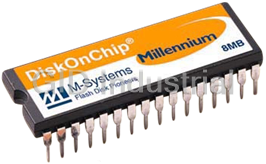






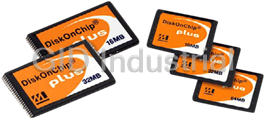
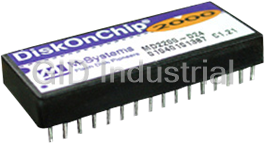
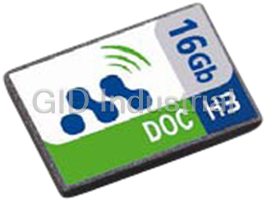
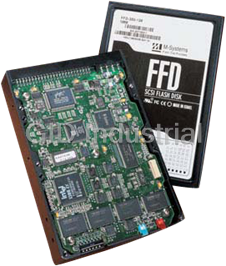
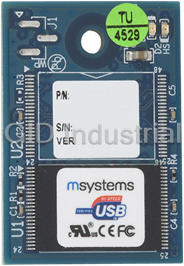
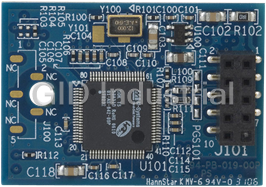




What they say about us
FANTASTIC RESOURCE
One of our top priorities is maintaining our business with precision, and we are constantly looking for affiliates that can help us achieve our goal. With the aid of GID Industrial, our obsolete product management has never been more efficient. They have been a great resource to our company, and have quickly become a go-to supplier on our list!
Bucher Emhart Glass
EXCELLENT SERVICE
With our strict fundamentals and high expectations, we were surprised when we came across GID Industrial and their competitive pricing. When we approached them with our issue, they were incredibly confident in being able to provide us with a seamless solution at the best price for us. GID Industrial quickly understood our needs and provided us with excellent service, as well as fully tested product to ensure what we received would be the right fit for our company.
Fuji
HARD TO FIND A BETTER PROVIDER
Our company provides services to aid in the manufacture of technological products, such as semiconductors and flat panel displays, and often searching for distributors of obsolete product we require can waste time and money. Finding GID Industrial proved to be a great asset to our company, with cost effective solutions and superior knowledge on all of their materials, it’d be hard to find a better provider of obsolete or hard to find products.
Applied Materials
CONSISTENTLY DELIVERS QUALITY SOLUTIONS
Over the years, the equipment used in our company becomes discontinued, but they’re still of great use to us and our customers. Once these products are no longer available through the manufacturer, finding a reliable, quick supplier is a necessity, and luckily for us, GID Industrial has provided the most trustworthy, quality solutions to our obsolete component needs.
Nidec Vamco
TERRIFIC RESOURCE
This company has been a terrific help to us (I work for Trican Well Service) in sourcing the Micron Ram Memory we needed for our Siemens computers. Great service! And great pricing! I know when the product is shipping and when it will arrive, all the way through the ordering process.
Trican Well Service
GO TO SOURCE
When I can't find an obsolete part, I first call GID and they'll come up with my parts every time. Great customer service and follow up as well. Scott emails me from time to time to touch base and see if we're having trouble finding something.....which is often with our 25 yr old equipment.
ConAgra Foods